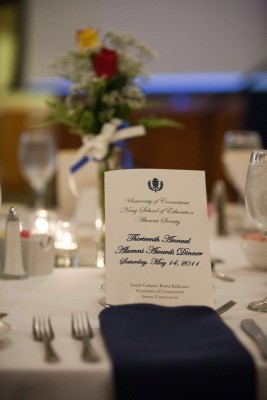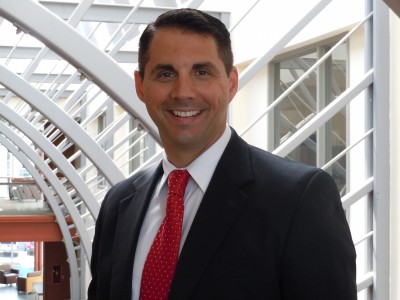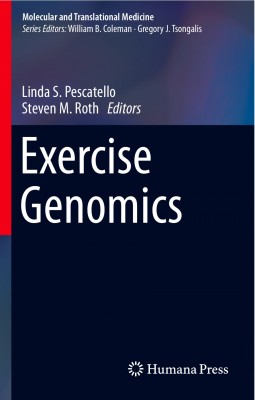 Accolades – below are news and notes from our alumni, faculty, staff, and students. We are proud of all the amazing accomplishments by our Neag family. If you have an accolade to share, we want to hear from you! Please send any news items (and story ideas) to shawn.kornegay@uconn.edu.
Accolades – below are news and notes from our alumni, faculty, staff, and students. We are proud of all the amazing accomplishments by our Neag family. If you have an accolade to share, we want to hear from you! Please send any news items (and story ideas) to shawn.kornegay@uconn.edu.
Alumni
Francis J. Di Vesta (B.S. in Ed. ‘42; Ph. D. Cornell University ‘48; Professor Emeritus of Psychology and Education, Pennsylvania State University, 1994-present) has co-authored a text with Mark D. Shermis, Dean of the College of Education at the University of Akron, titled Classroom Assessment in Action. The book targets what teachers should know about assessments in the school with a functional emphasis on formative assessment, especially designed for courses in the preparation of teachers.
Vincent M. Gagliardi (M.A. education ‘60) was recognized as part of the Southern Connecticut State University’s 2011 Distinguished and Outstanding Alumni Luncheon. Gagliardi was presented with the Charlene Hill Ricciardi Alumni Service Award. He earned a master’s degree from the University of Connecticut and a certified advanced degree studies (CAGS) degree at Fairfield University. He had a decorated career in education and served as a teacher, coach, athletic director, counselor and assistant principal. Gagliardi also served in the US Army.
Jack Gedney (Sixth-Year Diploma in Educational Administration ’03), school principal in Clinton, had 464 applicants and they interviewed 23 candidates for three positions at his school. About eight were Neag alums. Of their eight finalists, three were UCONN students. “All of your students performed superbly and it truly came down to personalities and ‘fit’ with the team,” said Gegney. “I am pleased to tell you that Anne Begin (B.S. elementary education ’10, M.A. curriculum and instruction ’11) accepted a contract with Clinton and began working here in Sept. She was wonderful and will make a great addition to the staff.”
Zato Kadambaya (M.A. mathematics education ‘03) – math department head at Norwich Free Academy was honored by Norwich branch of the NAACP with an Excellence in Education Award. Kadambaya, a Togo native and electrical engineer, worked as a plant manager in West Africa before immigrating to the US and did not begin first grade until the age of 11.
Scott V. Nicol (Sixth-Year Diploma in Educational Administration ’03, Ed.D. education leadership ’09) is the new director of performance management
for Hartford Public Schools.
Colleen Palmer (B.A. mathematics education ’75, Ph.D. educational administration ’07) is the new superintendent for Weston Schools.
Students
Three alumni from UConn’s Mentor Connection who had participated with the Puppetry Site are matriculating as undergrads in the same program. They include Austin Costello, a freshman, from Long Island; Xingxin Liu, a junior from New Haven, CT; and Alan Loiselle, a senior, from Providence, RI.
The UConn student chapter of the National Strength and Conditioning Association, led by with William Kraemer, had as their charity work this past semester to raise money for the Wounded Warrior Project (WWP). The WWP is a nonprofit organization whose common goal is to fight for the rights of our nation’s fallen soldiers and provide comprehensive services to those severely wounded veterans of the U.S. armed forces. They are using the WWP as an opportunity to reach out and benefit not only our nations wounded veterans, but the UConn community as well. The students raised $600.00 and recently presented a check to the WWP.
Eileen Gonzalez, a doctoral student in Curriculum and Instruction, was recently awarded the prestigious Graduate Student Fellowship from the American Association of Hispanics in Higher Education (AAHHE).
Sarah Harris was recognized with a Provost Award for Public Engagement for her work and dedication to the homeless in Willimantic. Sarah has been active providing sustained leadership linking neighborhood organizations and initiative such as the No Freeze Shelter and local schools in the Windham area. Sarah is also advancing scholarship through incorporating this work into her honors thesis.
Kendrick Henes, a senior secondary science major, has been invited by Liz Buttner of the State Department of Education to serve on the committee reviewing drafts of the Next Generation Science Education Standards (the only student pre-service teacher to serve in CT and nationally). Bob Segall, her instructor, had Henes present at one of his Science Methods classes and the opportunity took off from there.
Nicole LaPierre and Melanie Rodriguez would like to thank everyone who “liked” the photo on Facebook of Clark Elementary and Middle Academy. They won the “We Give Books” contest and will now receive a library of books for Clark School in Hartford. They are renovating and reopening the currently closed school library in Clark for their Masters Inquiry Project and these books will help them immensely. They are very appreciative of the support.
Faculty & Staff
Neag’s School Psychology program has been selected by the Commission for the Recognition of Specialties and Proficiencies in Professional Psychology (CRSPPP) as one of four exemplary national programs to be identified for specialty petition for school psychology.
Numerous faculty members participated with presentations at the recent Northeastern Educational Research Association (NERA) Conference in Rocky Hill. Faculty members included: Robin Grenier, Finding a Needle in the Haystack: Using Inductive Analysis in Qualitative Inquiry; David Moss, Presidents Panel: Former NERA Presidents Discuss Educational Research; and Tom Levine & David Moss, Making the Most Out of Life in Academia: Insiders Share Their Secrets.
Marijke Kehrhahn, along with Susan Payne, Rene Roselle, Rebecca Eckert and Robin Hands, helped plan the 2011 Annual Conference of the National Network for Educational Renewal (NNER) at the Hilton Hotel in Hartford. Also, thanks to Neag staff members, Donalyn Maneggia and Lisa Rasicot, for their support. This year’s participation was sponsored by the Teachers for a New Era @ UCONN. Neag has been a member of the NNER for many years and this year, Neag co-hosted the conference with the City University of New York, Montclair State, and the University of Southern Maine.
Larry Armstrong gave a presentation in Beijing, China at a meeting sponsored by the Chinese Nutrition Society and the Center for Disease Control & Prevention.
Sandy Bell, co-authored an article, “The role of analogy-guided learning experiences in enhancing students’ clinical decision-making skills.” Journal of Nursing Education. She also co-presented “Learning to be human: An introduction to mirror neurons” at the 2011 AAACE Conference, Indianapolis, IN.
Richard Bohannon was identified by Physical Therapy as: 1) the most frequently published author in Physical Therapy, 2) author of the most frequently cited article in Physical Therapy, 3) author of three of the 20 most cited articles in Physical Therapy, and 4) author of the 14th most cited reference in Physical Therapy.
Laura Burton co-published a study in the Journal of Sport Management, which was quoted in College Sports Business News.
Doug Casa received a “5 STAR review” by Doody’s Review Service for his book Preventing Sudden Death in Sport and Physical Activity. Doody’s Book Reviews collects information on approximately 3,000 titles each year from over 250 of the world’s leading publishers of professional level healthcare publications. Doody’s sends its reviews to more than 300,000 healthcare and health information professionals through a weekly e-mail service and personalized web pages. Overall, only 8% of the titles ever receive five stars.
Casey Cobb did a review of Both Sides Now: The Story of School Desegregation’s Graduates by Amy Stuart Wells et al. Education Review, retrieved from http://www.edrev.info/reviews/rev1109.pdf. He also conducted a review of “The Obama Education Blueprint: Researchers Examine the Evidence,” Democracy and Education Available at: http://democracyeducationjournal.org/home/vol19/iss1/14 Cobb was invited to the National Education Policy Center Fellows Meeting at the University of Colorado and he has become a member of a research advisory committee for the National Coalition on School Diversity.
Cristina Colon-Semenza has officially passed her Neurologic Certified Specialist (NCS) exam. She joins a very select group of only nine specialists in the state of Connecticut (and UConn now has two of them!). She has worked tirelessly to achieve this goal and her hard work and dedication have truly paid off. Congratulations Cristina!
Morgaen Donaldson co-wrote (in press). “Coaching for Instructional Improvement: Conditions and Strategies that Matter.” The Cambridge Handbook of Implementation Science for Educational Psychology.
Robin Grenier wrote “Taking the lead: A qualitative study of expert docent characteristics.” Museum Management and Curatorship.
Doug Kaufman and David Moss have received notification from Routledge Education Journals that their article published in The Teacher Educator (Volume 45, Issue 2, 2010) titled, “A New Look at Preservice Teachers’ Conceptions of Classroom Management and Organization: Uncovering Complexity and Dissonance,” was their most downloaded article published last year and has been included in the ‘Routledge Education Class of 2011’ Campaign.
Tammy Kolbe’s manuscript entitled, “And They’re Off: Tracking Federal Race to the Top Investments from the Starting Gate” was accepted by Educational Policy.
Jennifer Lease Butts wrote “Stewardship practices at the University of Connecticut,” Advancing Undergraduate Research. She was also named a member of ACPA’s Books and Media Review Board and she delivered a professional development workshop on Creativity for the Department of the Student Union.
Kimberly LeChasseur and Casey Cobb presented “The meaning of ‘community’ in community collaboration for educational change.” Paper presentation at the National Network for Educational Change Annual Conference in Hartford.
Kimberly LeChasseur, Anysia Mayer, Casey Cobb, & Morgaen Donaldson, presented “Democratic data values: Professional learning communities in six urban elementary schools.” Paper presentation at the National Network for Educational Change Annual Conference in Hartford.
Carl Maresh, Doug Casa and some graduate assistants went to Hawaii for a Timex research study at the Ironman World Competition.
David Moss was recognized by the National Education Research Association (NERA) with the Leo D. Dorothy Memorial Award, the highest award from the organization. The Leo D. Doherty Memorial Award is given to a NERA member who exemplifies the qualities that Leo Doherty brought to NERA members, his colleagues, and students over his longstanding career. The award, instituted by the NERA Board of Directors in 1981, honors the memory of Leo Doherty. Moss is a past-president of the association and active member for many years.
Joe Renzulli was awarded an honorary doctorate from the Universidad Camilo Jose Cela in Spain for his “intellectual contribution to the world of educative ideas by establishing a new theory about highly gifted students.”
Eliana Rojas traveled to Chili this summer on a Fulbright. Also, Rojas has been asked by the U.S. Embassy to represent U.S. Leadership at two International Experts Seminars on Non-Traditional Teacher Education and Professional Development Programs, one in Chile and one in Colombia.
Yuhang Rong was a featured speaker for the Connecticut State University’s 2011 Spring Conference Series. His presentation on “When Diversity Is Bad: Different Standards Lead to Unequal Educational Opportunities” kicked off the Conference Series.
Sue Saunders co-authored an article “Efficacy of orientation for new student affairs professionals.” College Student Affairs Journal.
Sue Saunders and Jennifer Lease Butts co-wrote “Teaching integrity.” Advancing the integrity of professional practice. New Directions for Student Services.
Jeff Volek co-authored a new book The Art and Science of Low Carbohydrate Living. This is a follow up on the New Atkins for a New You which after a year continues to be in the New York Times Top 10 in the Paperback Advice and Misc category. This new book goes into more depth and is more targeted at healthcare professionals.


 The
The  Accolades – below are news and notes from our alumni, faculty, staff, and students. We are proud of all the amazing accomplishments by our Neag family. If you have an accolade to share, we want to hear from you! Please send any news items (and story ideas) to
Accolades – below are news and notes from our alumni, faculty, staff, and students. We are proud of all the amazing accomplishments by our Neag family. If you have an accolade to share, we want to hear from you! Please send any news items (and story ideas) to 

 Raised by my grandparents, I grew up in China. After every major exam, my school ranked every student. No matter how well I did, I was never the No. 1 kid in the class, and my grandmother never seemed satisfied. One day after she scolded me again for only scoring 96 on a math test instead of a perfect 100, I resentfully asked her, “Why can’t everyone be number one?” She looked at me with an all-knowing smile and said, “If everyone is number one, then no one is number one.”
Raised by my grandparents, I grew up in China. After every major exam, my school ranked every student. No matter how well I did, I was never the No. 1 kid in the class, and my grandmother never seemed satisfied. One day after she scolded me again for only scoring 96 on a math test instead of a perfect 100, I resentfully asked her, “Why can’t everyone be number one?” She looked at me with an all-knowing smile and said, “If everyone is number one, then no one is number one.” Linda S. Pescatello recently published Exercise Genomics, the first book of its kind to provide an extensive look into the research development and expert opinion on genetics and genomics across a range of exercise-related traits, including exercise performance, health-related fitness and physical activity.
Linda S. Pescatello recently published Exercise Genomics, the first book of its kind to provide an extensive look into the research development and expert opinion on genetics and genomics across a range of exercise-related traits, including exercise performance, health-related fitness and physical activity. “This is likely to be the most significant building block that these students will have in science,” said Dr. David Moss, an associate professor at the
“This is likely to be the most significant building block that these students will have in science,” said Dr. David Moss, an associate professor at the 